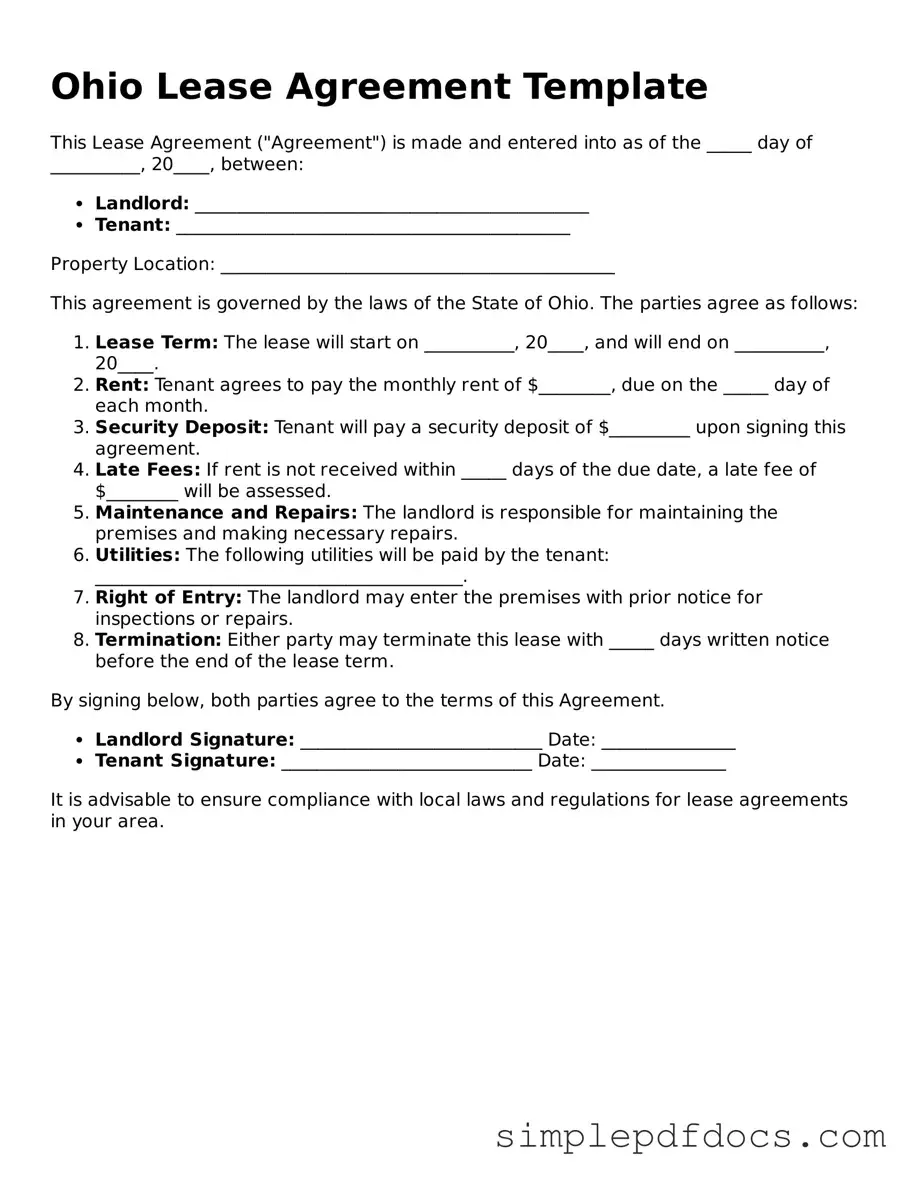Legal Lease Agreement Document for the State of Ohio
The Ohio Lease Agreement form is a legal document that outlines the terms and conditions between a landlord and a tenant for renting a residential property in Ohio. This agreement serves to protect the rights and responsibilities of both parties, ensuring a clear understanding of the rental arrangement. Understanding the key components of this form is essential for a smooth leasing experience.
Get Document Here
